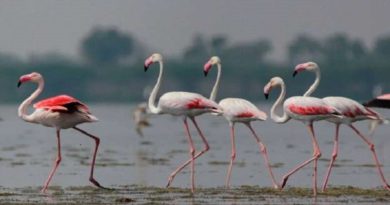New study reveals mercury pollution’s ripple effects on biodiversity, others
On the occasion of the 2023 International Day for Biodiversity, a new study sheds light on the profound socio-economic consequences of mercury pollution on biodiversity, fisheries and livelihoods. Mercury, a highly hazardous substance with detrimental effects on both humans and animals, poses significant risks to health and ecosystems.
The study titled “The socio-economic impacts of mercury pollution on fisheries and livelihoods: Exploring how a natural capital approach may support the implementation of the Minamata Convention on Mercury”, highlights the urgent need for action at all levels to combat the release of anthropogenic mercury into the environment, emphasizing the importance of understanding the effects of mercury on fish populations, as well as the often overlooked social, environmental and economic costs associated with mercury pollution.
The impact of toxic mercury reaches ecosystems well beyond its original sources, extending from tropical forests affected by artisanal and small-scale gold mining to the depths of the ocean, industrial areas and even the high Arctic. This highly hazardous substance disrupts essential ecosystem functions, such as food provision, air filtration and water purification, with repercussions on the livelihoods and health of millions of people, including indigenous communities who play a vital role in safeguarding global biodiversity.
A primary pathway for human exposure to mercury is through the consumption of contaminated fish and seafood, particularly species like tuna, swordfish and freshwater bass that accumulate high levels of methylmercury, a highly toxic form of mercury. In certain fish species, which are commonly at the top of the food chain, methylmercury can accumulate up to a million times greater than the levels in the surrounding water. However, there is still a significant knowledge gap regarding the precise effects of mercury on fish populations in terms of mortality and reproduction. The socio-economic impacts on the fisheries sector, which plays a crucial role in food security and local economies, also remain poorly understood and rarely quantified.
Evidence suggests that mercury pollution leads to reduced stock sizes of commercial fish species, potentially affecting the profitability of fisheries, but identifying the specific impacts of mercury pollution is challenging due to the large number of other stressors and limited research. Nevertheless, several studies in developed countries indicate that fish markets are affected by fishing restrictions to prevent mercury intake by consumers, and a decrease in consumer demand for fish products as a result of increased awareness of the health risks associated with high mercury levels in fish.
The impacts of mercury on small-scale fisheries and local livelihoods also go beyond the health impacts and include other significant social, environmental and economic costs with evidence suggesting that mercury pollution has an effect on the effort per unit catch through an overall decrease in stock size of commercial fish species, potentially leading to a substantial impact on the profitability of small-scale fisheries.
To address these issues, the study suggests the further development of frameworks like the System for Environmental Economic Accounting (SEEA) to help with a systematic approach to map the natural and monetary effects of mercury pollution. Collaboration with platforms such as the Global Environment Facility (GEF), biodiversity-related conventions, and The Economics of Ecosystems and Biodiversity (TEEB) initiative can contribute to sustainable environmental management by incorporating ecosystem services and natural capital approaches.
This study is part of broader efforts by the Secretariat of the Minamata Convention, in response to a decision by the Conference of the Parties, to demonstrate the linkages between mercury pollution and impacts on biodiversity. It coincides with the development by the Secretariat of a report underscoring the Minamata Convention’s contribution to the Kunming-Montreal Global Biodiversity Framework that will be submitted for consideration by the fifth meeting of the Conference of the Parties (COP-5), which is scheduled to take place from 30 October to 3 November 2023 in Geneva, Switzerland.




